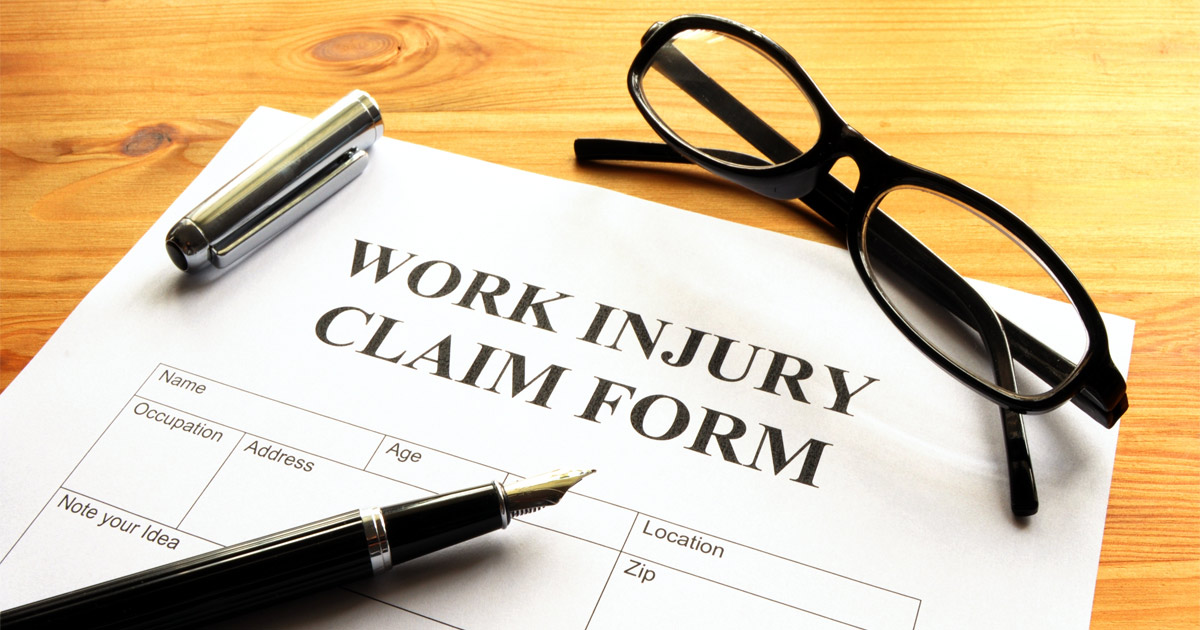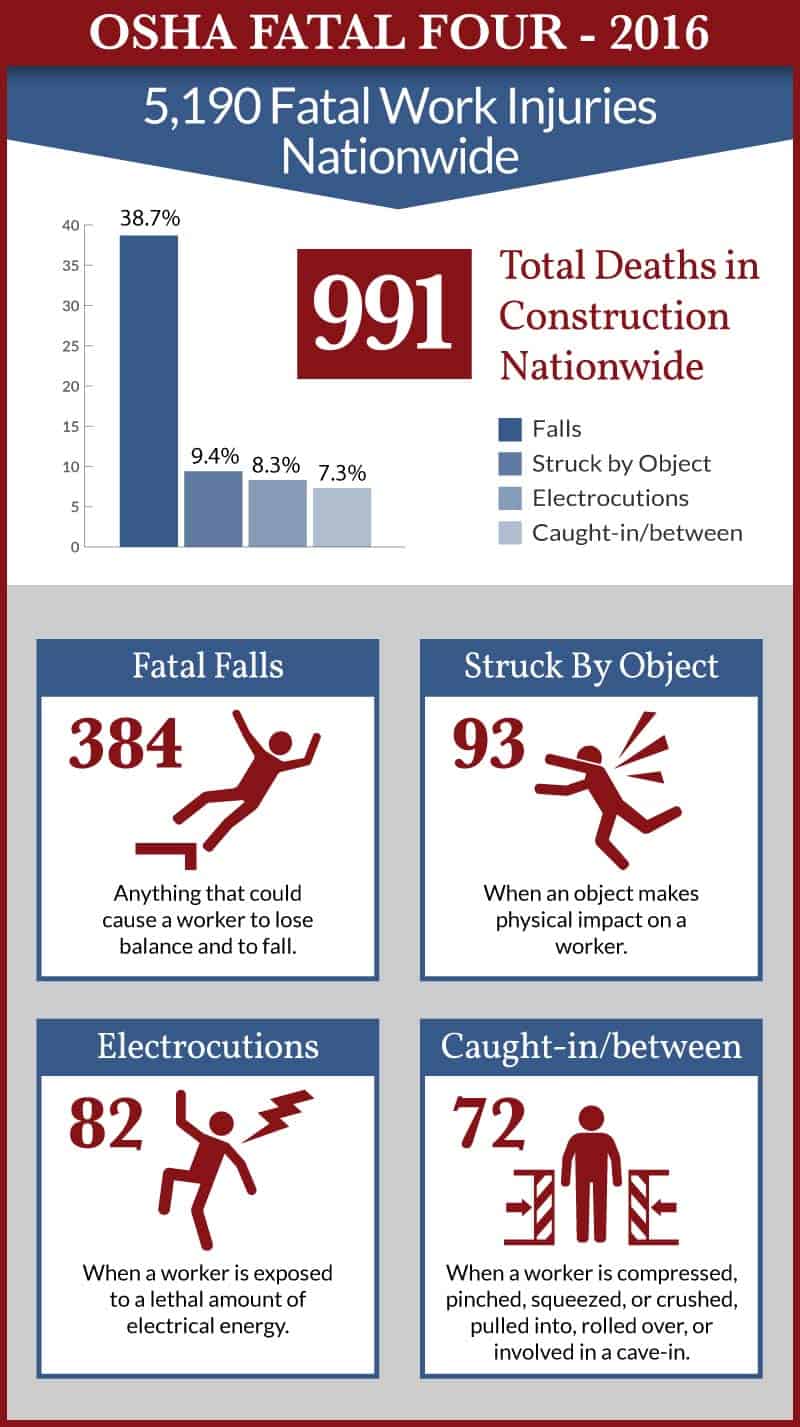What are the Most Common Work-Related Injuries?

Every employee is entitled to a safe workplace that is free of hazards; however, data on job-related illnesses and injuries reveals that work is a dangerous place for many Americans. The United States Department of Labor (DOL) reports that 2.5 people suffer from non-fatal work injuries and illnesses, and more than 5,000 are killed at work every year. The key to preventing devastating work injuries is knowing how and why they happen.
According to the Bureau of Labor Statistics (BLS), logging, fishing, and piloting aircrafts are the three most dangerous jobs in the United States. This does not mean that more traditional work is accident-free. Job hazards are in every type of workplace. The following are common work accidents and injuries, as well as guidance on how to avoid them.
Burns and Electrocutions
Burns and electrocutions can happen at nearly every type of job. If electricity is present, workers can get hurt. Depending on the frequency, the amount of current flowing through the body, and the length of exposure, contact can cause anything from a slight tingle to cardiac arrest, substantial burns, and death.
Caught In/Between Accidents
A caught in/between accident happens any time a worker gets trapped or caught. Common caught in/between accidents involve:
- Cave-ins that crush or suffocate an individual.
- Clothing, hair, or jewelry getting caught in machinery.
- Getting the body caught in a piece of equipment or machinery.
- Being trapped between a vehicle and another object.
Caught in/between accidents often happen while trenching and excavating. As workers dig and remove large quantities of dirt, the soil around them can become unstable. Movement from nearby vehicles and changing weather can disrupt soil, causing deadly cave-ins that crush and suffocate workers in the trenches below.
Unlike cave-ins that bury workers under soil, water, and sewage, a different type of caught in/between accident happens when employees forget to safely disable equipment. Lockout/tagout procedures prevent dangerous machinery from accidentally powering on during repairs and inspections. Compliance with the Occupational Safety and Health Administration’s (OSHA) lockout/tagout standard can prevent an estimated 120 deaths and 50,000 work injuries every year.
Exposure to Hazardous Chemicals
For many employees, exposure to hazardous chemicals is common. To protect employees, OSHA sets permissible exposure limits (PELs) for various substances. Chemical manufacturers and employers are required to disclose risks and provide safety training so that workers can take steps to protect themselves and others. If accidental exposure occurs, workers should be trained to handle an emergency and assist employees in distress.
Mesothelioma
Mesothelioma is a type of incurable cancer that occurs in the mesothelium, the thin layer of tissue that covers most of the internal organs. It is an aggressive form of cancer that usually affects the abdomen and the lungs. Exposure to asbestos can cause the development of mesothelioma. Asbestos is a naturally occurring mineral that was used in a wide range of building materials. When working in old buildings and remodeling, asbestos dust is created. When workers inhale or swallow asbestos fibers, they settle in the body, which could lead to mesothelioma. Despite all that is known about risks of asbestos exposure, small amounts of the mineral are still permitted in certain products that are used and sold today.
Overexertion Injuries
A debilitating work injury can happen in a matter of seconds. Retail workers, grocery store employees, and delivery drivers can suffer from painful overexertion injuries that take weeks or months to recover. Common overexertion injuries include:
- Back injuries: These can be especially painful and may require physical therapy.
- Joint and tendon problems: Tears, dislocations, and inflammation impair mobility and sideline workers.
- Muscle strains: Pain from pulling, pushing, carrying, or lifting objects can keep employees out of work for days or weeks.
- Neck injuries: Neck injuries often cause a domino effect where pain travels up to the head or down through the back and limbs.
Motor Vehicle Accidents
Delivery drivers, school bus drivers, rideshare employees, and truckers all spend the majority of their workday in traffic, causing them to be at risk for motor vehicle accidents. In 2018, more than 2,840 people were killed in distracted driving car accidents, which is one of the leading causes of collisions in the United States. Taking one’s eyes off the road for just a few seconds is enough to cause a car accident. When a distracted driver is operating an enormous delivery truck or multi-ton tractor trailer, the results can be catastrophic. Preventing distracted driving crashes should be a priority for every business.
Repetitive Stress Injuries
While some injuries happen in an instant, others develop after repetitive motions. Repetitive stress injuries involve a gradual accumulation of damage to muscles, nerves, and tendons over time. A worker who repeats a task on an assembly line can experience bursitis or Carpal Tunnel Syndrome. These injuries are treated with rest, compression, and physical therapy. More severe cases may require surgery.
Slip and Falls
Slip and fall accidents cause more than 25 percent of all non-fatal work injuries every year. Common reasons for slip and falls include:
- Uneven or damaged carpeting and flooring
- Spills and debris in walkways
- Ice and snow-covered pavement
- Damaged or missing steps and handrails
- Poor lighting
Slip and fall accidents are easy to prevent. Keeping high-traffic areas well-lit, maintained, and free of tripping hazards are good places to start.
Benefits for Job Injuries
Pennsylvania employees have recourse to collect financial benefits for work injuries. Employers across the state are required by law to carry Workers’ Compensation insurance, which provides wage-loss and medical benefits for employees who are injured during the course of their work.
How Do I File a Workers’ Compensation Claim?
Reporting a work injury to an employer within 21 days of an accident is the first step in the Workers’ Compensation claim process. After this step, the employer reports the injury to their insurance company and notifies the Bureau of Workers’ Compensation. The insurer can either approve or deny liability for the claim. If the claim is approved, payment is made until the injured employee goes back to work. If the claim is denied, the worker has the right to appeal. A hurt worker has three years from the injury date to file a claim petition. A Workers’ Compensation judge in their county is then assigned to the case, and a hearing is scheduled.
Similar to a traditional court case, the Workers’ Compensation judge hears evidence from both sides before making a determination. Evidence usually includes medical records and testimonies from doctors and other professionals. If mediation is feasible, both parties work together to achieve a settlement. If a settlement cannot be reached, a judge renders a decision. Since errors and delays can impact a claim at any stage in the process and jeopardize benefits, it is always a good decision to enlist the guidance of a Workers’ Compensation lawyer.
Bucks County Workers’ Compensation Lawyers at Freedman & Lorry, P.C. Help Employees Claim Benefits for Injuries
Some injured workers have concerns about claiming Workers’ Compensation, but our Bucks County Workers’ Compensation lawyers at Freedman & Lorry, P.C. strongly represent hurt employees. Call us at 888-999-1962 or complete our online form for a free consultation today. Located in Philadelphia, and Cherry Hill, New Jersey, we proudly serve clients throughout Pennsylvania.
